Mexico
Welcome to Mexico
Step into a land where ancient civilizations meet vibrant modern life, where every street corner hums with music, color, and the aroma of world-famous cuisine. Mexico is a country that invites you to explore its rich tapestry of history, culture, and natural wonders. Whether you’re drawn by the turquoise waves of the Caribbean, the mysteries of Mayan ruins, or the lively spirit of its cities, Mexico promises an experience that is as diverse as it is unforgettable.
Mexico is a nation of contrasts and surprises. Stretching from the arid deserts of the north to the lush jungles of the south, and bordered by both the Pacific Ocean and the Caribbean Sea, its geography is as varied as its culture. The country is home to 31 UNESCO World Heritage Sites, sprawling metropolises like Mexico City, colonial gems such as San Miguel de Allende, and idyllic beach towns like Tulum and Puerto Vallarta. Here, you can wander through ancient pyramids, savor street tacos bursting with flavor, or lose yourself in the rhythms of mariachi and salsa.
The Mexican people are renowned for their warmth and hospitality, eager to share their traditions and stories. The nation’s festivals, from the colorful Day of the Dead in Oaxaca to the exuberant San Marcos Fair in Aguascalientes, offer a window into a culture that celebrates life with passion and creativity. Mexico’s artistic legacy is equally impressive, with world-class museums, vibrant street art, and a culinary scene that’s recognized as Intangible Cultural Heritage by UNESCO.
Why Visit Mexico?
1.
A Tapestry of Culture and History:
Mexico is a living museum, where the legacies of the Maya, Aztec, and countless other civilizations are woven into daily life. Explore the awe-inspiring ruins of Chichen Itza and Teotihuacan, wander through colonial cities with centuries-old cathedrals, and immerse yourself in festivals that blend indigenous and Spanish traditions. Every region offers its own unique customs, crafts, and flavors, making each journey a new discovery.

2.
Natural Beauty and Adventure:
From the pristine beaches of the Riviera Maya to the rugged canyons of Copper Canyon, Mexico’s landscapes are breathtaking. Dive into crystal-clear cenotes, hike through cloud forests, or surf the Pacific swells. The country’s biodiversity is astounding, with opportunities for whale watching, birding, and exploring lush jungles teeming with wildlife. Whether you seek relaxation or adrenaline, Mexico’s great outdoors will captivate you.
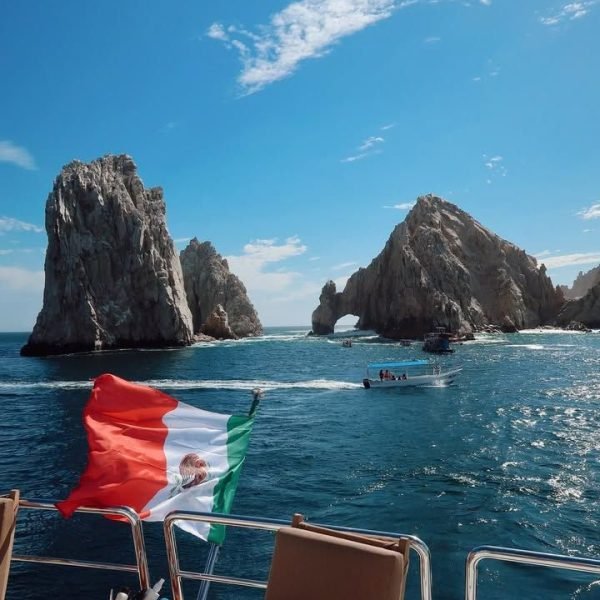
Planning Your Trip
Visa Information
For most travelers, visiting Mexico is straightforward. Citizens of the United States, Canada, the European Union, and many other countries do not require a visa for tourist stays of up to 180 days. Upon arrival, you’ll receive a Forma Migratoria Múltiple (FMM), which must be kept safe and returned upon departure. If you’re considering a longer stay, such as for retirement or remote work, Mexico offers both temporary and permanent residency visas. In 2025, visa requirements and income thresholds may vary by consulate, so it’s wise to check with the Mexican consulate in your home country for the latest updates before your trip.
Best Time to Visit
Mexico’s climate varies by region, but generally, the best time to visit is during the dry season, from November to April. During these months, you’ll enjoy warm, sunny days ideal for beach vacations, city explorations, and outdoor adventures. The rainy season, from May to October, brings lush landscapes and fewer crowds, especially in the interior and southern regions. If you’re keen on festivals, plan your visit around major events: Day of the Dead (late October to early November), Semana Santa (Easter), or the San Marcos Fair in Aguascalientes (April).
Getting To and Around
Getting to Mexico
Mexico is well-connected to the world, with major international airports in Mexico City, Cancun, Guadalajara, and Monterrey. Direct flights are available from most major cities in North America, Europe, and Latin America. If you’re traveling from the United States, driving across the border is also an option, with several busy crossings in California, Texas, and Arizona.
Getting Around
- Domestic Flights:
For long distances, Mexico’s domestic airlines offer efficient and affordable connections between major cities and resort areas. Low-cost carriers make it easy to hop from the Pacific coast to the Yucatan Peninsula in just a few hours. - Buses:
Mexico’s intercity bus network is extensive, comfortable, and reliable. Luxury buses (often called “Ejecutivo” or “Primera Clase”) feature reclining seats, air conditioning, and onboard entertainment. For budget travelers, second-class buses connect even the smallest towns at a lower price point. Express buses, known as “directo,” are faster and make fewer stops, making them ideal for longer journeys. - Public Transportation:
Within cities, public buses and metro systems are the most common way to get around. Mexico City and Guadalajara boast efficient subway networks, with tickets costing just a few pesos per ride. Rechargeable metro cards can be used across various modes of transport, including buses, light rail, and even bike-sharing programs. In smaller towns, microbuses and colectivos (shared vans) are widely used and offer a local experience at minimal cost. - Taxis and Rideshares:
Taxis are plentiful in most urban areas, but it’s advisable to use authorized taxi stands or reputable rideshare apps for safety and convenience. In tourist hotspots, many hotels can arrange reliable transportation for you. - Car Rentals:
Renting a car is a great way to explore regions like the Yucatan, Baja California, or Oaxaca at your own pace. Roads are generally well-maintained, but be prepared for tolls on major highways and always carry your driver’s license and insurance documents.
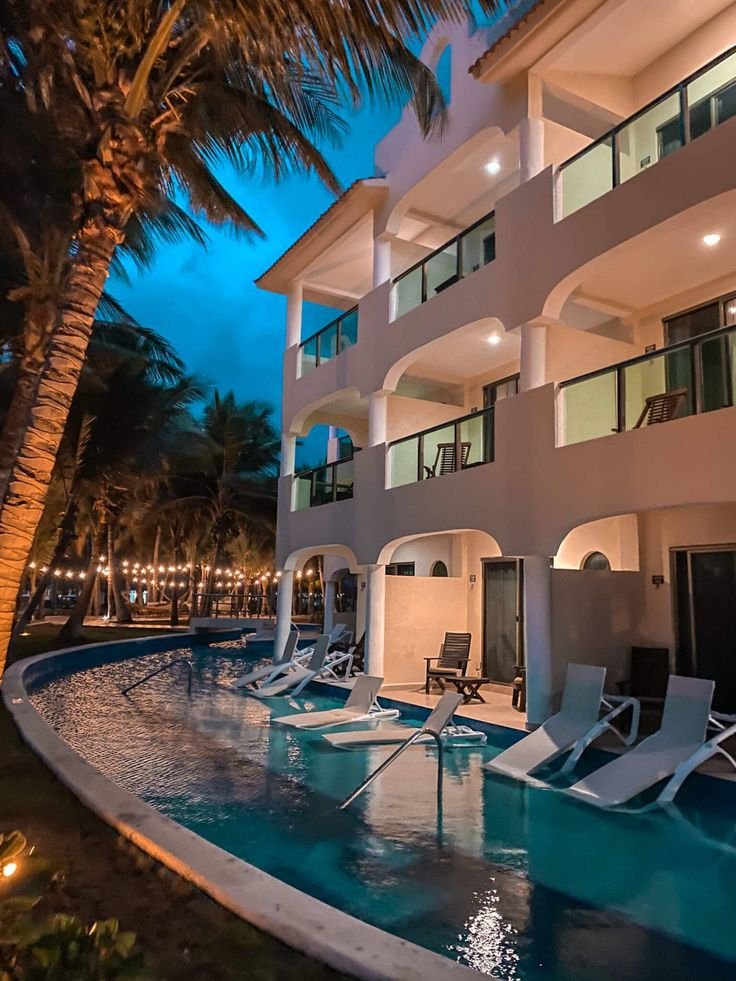
Accommodation
Mexico offers an extraordinary range of accommodation options that cater to every travel style and budget, from luxurious all-inclusive resorts to charming boutique hotels and practical extended-stay apartments.
Luxury Resorts and All-Inclusive Hotels
For travelers seeking indulgence, Mexico’s resort scene is thriving with new openings in 2025, including high-end properties that blend luxury with local culture. Notable among these is the Park Hyatt Los Cabos at Cabo del Sol, opening in April 2025, which features 163 rooms and suites, multiple pools, a vast wellness center, and several dining venues, all set against the stunning backdrop of the Baja California coastline. Along the Riviera Nayarit, the Rosewood Mandarina promises an exclusive experience with suites boasting private terraces, plunge pools, and dramatic ocean views, complemented by ziplining, horseback riding, and hiking excursions.
In the Riviera Maya, the Kimpton Tres Rios will debut as an all-inclusive resort surrounded by ecological trails and cenotes, offering 351 suites and multiple dining and drinking venues. For adults-only travelers, Breathless Puerto Vallarta opens with 450 keys, seven restaurants, and nightly entertainment, all under an Unlimited-Luxury all-inclusive model. The Dreams Grand Island Cancun expands the adults-only category with 616 rooms and 19 dining concepts, alongside a large wellness center.
Unique luxury is also found at TROBBU Tulum, an all-villa jungle retreat opening in January 2025, featuring spacious villas with private infinity pools and all-inclusive dining within the privacy of your villa.
Boutique and Mid-Range Hotels
Mexico City, a cultural hub, offers a wealth of boutique hotels that blend modern design with local artistry, perfect for travelers who want a more intimate and authentic stay. These hotels often feature rooftop terraces, stylish interiors, and easy access to museums, markets, and historic neighborhoods.
Extended Stay and Apartment-Style Hotels
For longer visits or travelers who prefer a home-like environment, Mexico has many extended-stay options. Cities like Mexico City, Puerto Vallarta, Tijuana, and Chihuahua offer aparthotels and suites with kitchens, gyms, pools, and business centers, providing convenience and comfort. Examples include ULIV Mexico City and Canto del Sol Puerto Vallarta, which combine hotel amenities with apartment-style living, ideal for families, business travelers, or those seeking flexibility.
Budget and Hostels and Tips
Budget and Hostels
For budget-conscious travelers, Mexico’s hostels and budget hotels provide safe, clean, and sociable environments. Many are located in popular backpacker areas such as Oaxaca, Playa del Carmen, and Mexico City’s historic center, offering dormitory beds and private rooms at affordable rates.
Tips for Booking Accommodation
- Book early, especially for popular resorts and during peak seasons (November to April).
- Consider all-inclusive options for convenience and value, particularly at beach destinations.
- Check amenities carefully if you require specific features like WiFi, pools, or kitchen facilities.
- Explore boutique hotels for a more personalized experience in urban centers.
- Use trusted platforms and read recent traveler reviews to ensure quality and safety.
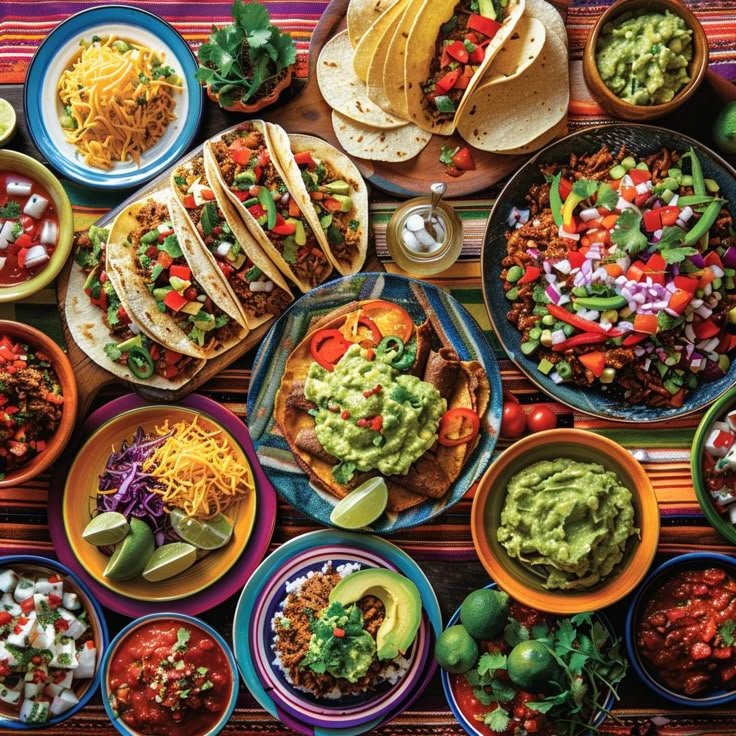
Food and Drink
Mexican cuisine is a vibrant celebration of flavors, colors, and traditions, recognized worldwide for its diversity and depth. A journey through Mexico’s food scene is a journey through its history, geography, and culture.
Regional Culinary Highlights
- Yucatán Peninsula: Known for dishes like cochinita pibil (slow-roasted marinated pork) and sopa de lima (lime soup), the region’s cuisine blends Mayan influences with Spanish and Caribbean flavors. Fresh seafood is abundant along the coast.
- Oaxaca: Famous for its seven varieties of mole sauce, tlayudas (large toasted tortillas topped with beans and cheese), and mezcal, Oaxaca is a must-visit for food lovers. The city’s markets overflow with local cheeses, chocolate, and herbs.
- Mexico City: A melting pot of regional cuisines, the capital offers everything from street tacos and tamales to gourmet restaurants serving contemporary Mexican dishes. Don’t miss trying tacos al pastor, prepared with marinated pork cooked on a vertical spit.
- Northern Mexico: Known for hearty grilled meats and flour tortillas, the north offers specialties like cabrito (roast goat) and machaca (dried shredded beef). The region also produces some of Mexico’s best cheeses and wines.
Street Food Culture
Street food is the heart of Mexico’s culinary identity. Markets and street stalls serve up an array of affordable and delicious options: tacos, quesadillas, elotes (grilled corn), churros, and fresh fruit with chili powder. Sampling street food is essential to experiencing authentic Mexican flavors and social culture.
Dining Experiences
- Casual Eateries: Small family-run restaurants called “fondas” or “comedor” serve traditional home-style meals at reasonable prices.
- Fine Dining: Mexico’s culinary scene has gained international acclaim with chefs like Enrique Olvera and Daniela Soto-Innes leading the way. Cities like Mexico City, Guadalajara, and Monterrey feature award-winning restaurants that blend traditional ingredients with innovative techniques.
- All-Inclusive Resorts: Many resorts offer multiple dining venues, from buffet-style to à la carte restaurants featuring Mexican and international cuisines, often included in the stay.
Drinks to Try
- Tequila and Mezcal: Mexico’s iconic spirits, made from the agave plant, are best enjoyed neat or in cocktails like the margarita. Mezcal offers a smokier flavor and is often paired with orange slices and chili salt.
- Aguas Frescas: Refreshing non-alcoholic drinks made from fresh fruits, flowers, or seeds, such as hibiscus (jamaica), tamarind, or horchata (rice and cinnamon).
- Mexican Coffee: Rich and aromatic, often served with cinnamon or piloncillo (unrefined cane sugar).
- Beer: Mexico produces popular beers like Corona, Modelo, and Pacifico, widely available and perfect for pairing with spicy food.
Food Safety Tips
- Eat at busy, well-regarded stalls or restaurants to ensure freshness.
- Drink bottled or purified water and avoid ice from unknown sources.
- Wash hands or use sanitizer before eating, especially when enjoying street food.
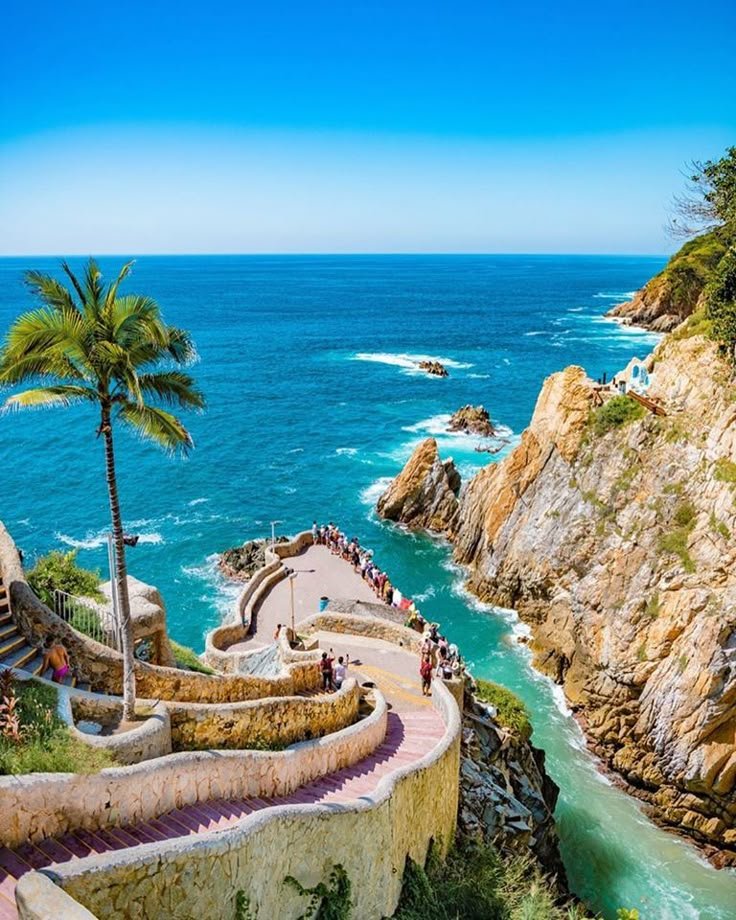
Must-See Attractions
- Chichen Itza
One of the New Seven Wonders of the World, Chichen Itza is an iconic archaeological site that showcases the grandeur of the ancient Mayan civilization. The centerpiece is El Castillo, the towering pyramid that aligns with astronomical events. Explore the Temple of the Warriors, the Great Ball Court, and the Observatory to marvel at the architectural and cultural sophistication of this UNESCO World Heritage Site. Visiting Chichen Itza offers a profound glimpse into Mexico’s pre-Hispanic history and is a highlight for any traveler.
- Mexico City
The bustling capital is a cultural treasure trove blending ancient and modern. The Zócalo, or main square, is surrounded by historic landmarks including the Metropolitan Cathedral and the National Palace. Chapultepec Park, one of the largest urban parks in the world, houses the Chapultepec Castle and several museums like the National Museum of Anthropology, home to priceless Aztec and Mayan artifacts. The Frida Kahlo Museum in the bohemian neighborhood of Coyoacán offers insight into one of Mexico’s most beloved artists. Mexico City’s vibrant street life, markets, and world-class dining make it a must-see urban destination.
- Tulum
Tulum combines stunning natural beauty with ancient history. The Tulum ruins, perched on cliffs overlooking the turquoise Caribbean Sea, are among the best-preserved Mayan sites. Nearby, the Gran Cenote offers crystal-clear waters for swimming and snorkeling in a unique underground cave system. Tulum Beach’s white sands and laid-back vibe make it a perfect place to relax after exploring the ruins. The town also boasts eco-friendly boutique hotels and a thriving culinary scene focused on fresh, local ingredients.
- Xcaret Park
Located on the Riviera Maya, Xcaret is an eco-archaeological park that immerses visitors in Mexico’s natural and cultural heritage. You can explore underground rivers, swim with dolphins, visit butterfly pavilions, and enjoy traditional Mexican performances. It’s a perfect destination for families and nature lovers who want to experience biodiversity and folklore in one place.
- Teotihuacan
Known as the “City of Gods,” Teotihuacan is an ancient Mesoamerican city just outside Mexico City. The site is famous for the massive Pyramid of the Sun and Pyramid of the Moon, which visitors can climb for panoramic views of the archaeological zone and surrounding valley. The Avenue of the Dead, lined with temples and palaces, adds to the mystique of this once-thriving metropolis. Teotihuacan’s origins remain partly mysterious, adding to its allure.
- Cozumel
Cozumel is a paradise for beach lovers and divers. The island’s crystal-clear waters and vibrant coral reefs, including the renowned Palancar Reef, offer world-class snorkeling and scuba diving. Cozumel’s relaxed atmosphere, combined with beautiful beaches and excellent resorts, makes it an ideal destination for both adventure and relaxation.
- Puerto Vallarta
This Pacific coastal city blends colonial charm with beach resort luxury. Stroll along the Malecón boardwalk lined with sculptures, shops, and restaurants, or explore the historic old town with cobblestone streets and vibrant markets. Outdoor activities like whale watching, zip-lining, and jungle tours are popular here. Puerto Vallarta’s mix of natural beauty and cultural experiences makes it a favorite among travelers.
- Mazatlán
Known as the “Pearl of the Pacific,” Mazatlán offers miles of golden beaches and the longest boardwalk in Latin America. The city’s historic center features the Angela Peralta Theater, the Mazatlán Cathedral, and the Mazatlán Lighthouse, one of the highest natural lighthouses in the world. Unique local experiences include riding in a “pulmonia,” a colorful golf cart-style taxi, and exploring the aquarium, which showcases the biodiversity of the Gulf of California.

Must-Do Activities
- Explore Ancient Ruins
Climbing the pyramids at Chichen Itza or Teotihuacan is a thrilling way to connect with Mexico’s ancient past. Guided tours offer rich historical context, and early morning visits help avoid crowds and heat. For a more intimate experience, visit lesser-known sites like Ek Balam or Coba, where you can still climb ancient structures surrounded by jungle.
- Swim in Cenotes
Mexico’s Yucatan Peninsula is dotted with cenotes-natural freshwater sinkholes formed by collapsed limestone. These crystal-clear pools offer unique swimming, snorkeling, and diving experiences. Popular cenotes include Gran Cenote near Tulum, Ik Kil near Chichen Itza, and Cenote Azul near Playa del Carmen. Swimming in these natural wonders is both refreshing and surreal.
- Experience Mexican Festivals
Timing your visit around traditional festivals can add unforgettable cultural depth to your trip. The Day of the Dead (Día de los Muertos) in early November is a vibrant celebration honoring ancestors with colorful altars, parades, and music. Semana Santa (Holy Week) features religious processions and festivities across the country. Other notable events include the Guelaguetza festival in Oaxaca and the San Marcos Fair in Aguascalientes.
- Enjoy Beach and Water Sports
Mexico’s coastlines are perfect for a variety of water activities. Surfing is popular in Sayulita and Puerto Escondido, while snorkeling and diving thrive in Cozumel, Cancun, and the Riviera Maya. Kayaking, paddleboarding, and sailing are widely available, and whale watching tours operate seasonally along the Pacific coast.
- Taste Authentic Mexican Cuisine
Food is a must-do experience in Mexico. Beyond street tacos, try regional specialties like mole from Oaxaca, cochinita pibil from Yucatán, and fresh seafood ceviche from coastal towns. Food tours and cooking classes are excellent ways to learn about local ingredients and culinary traditions.
- Visit Ecological Parks and Nature Reserves
Places like Xcaret and Rio Secreto offer immersive nature experiences. Rio Secreto features guided tours through underground river caves adorned with stunning stalactites and stalagmites. Birdwatching and jungle hikes are also popular in Chiapas and the Lacandon rainforest.
- Explore Vibrant Cities on Foot or Bike
Mexico City’s historic center is best explored on foot, with its plazas, markets, and museums within walking distance. Many cities offer bike rentals or guided cycling tours, allowing you to discover neighborhoods, street art, and local life at a leisurely pace.
- Take a Pulmonia Tour in Mazatlán
For a fun and unique local experience, hop aboard a pulmonia-a colorful, open-air golf cart taxi unique to Mazatlán. These tours take you through the city’s historic sites, beaches, and vibrant neighborhoods, combining sightseeing with a taste of local culture.
- Horseback Riding Along the Beach
In destinations like Tulum and Mazatlán, horseback riding along the coastline offers a serene way to enjoy the scenery. This activity suits all skill levels and provides a memorable connection to Mexico’s natural landscapes.
- Relax at World-Class Spas and Wellness Centers
Many resorts and boutique hotels in Mexico offer luxurious spa treatments that incorporate indigenous healing traditions and natural ingredients like agave and volcanic clay. Wellness retreats around Tulum and Los Cabos focus on yoga, meditation, and holistic health.
Mexico in 2025 is a destination where history, culture, nature, and adventure converge. From exploring ancient ruins and swimming in mystical cenotes to savoring authentic cuisine and enjoying vibrant festivals, the country offers something for every traveler. Whether you seek relaxation on a sun-drenched beach or the thrill of discovery in bustling cities and jungles, Mexico’s must-see attractions and must-do activities promise a rich and rewarding journey.
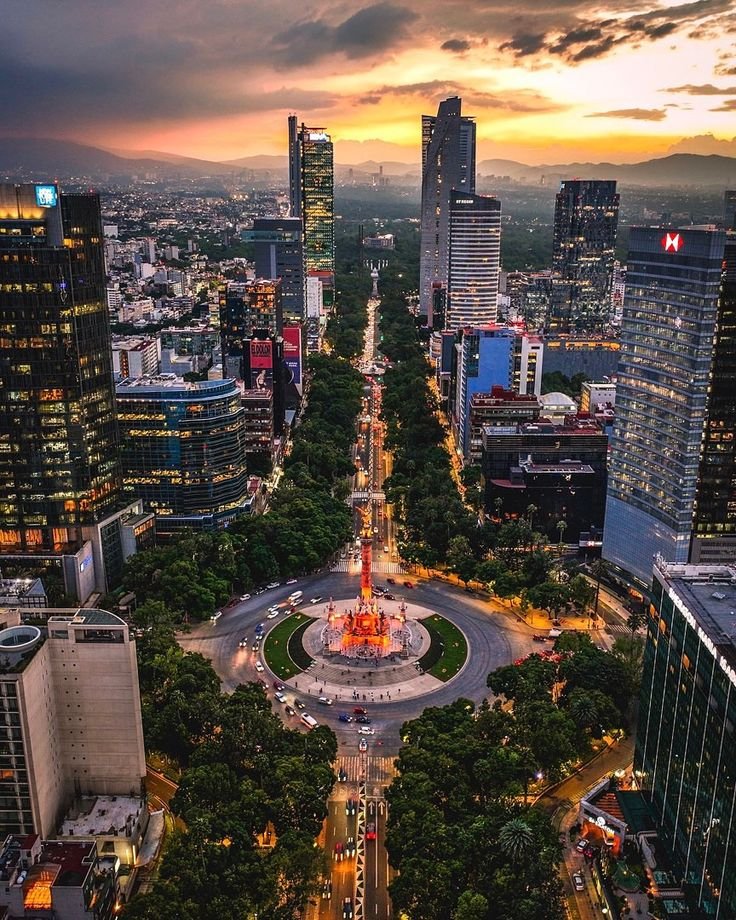
Travel Tips
Traveling to Mexico in 2025 offers an exciting opportunity to explore a country rich in culture, history, and natural beauty. To make the most of your trip, it’s essential to be well-prepared, especially regarding safety, understanding local customs, and communicating effectively. Here’s a comprehensive guide to help you navigate your Mexican adventure smoothly and confidently.
Safety Advice
Stay Informed and Choose Your Destinations Wisely
Mexico is a vast country with varying safety levels depending on the region. Popular tourist destinations such as Cancun, Playa del Carmen, Tulum, Puerto Vallarta, and Mexico City’s main tourist areas are generally safe for visitors who exercise common sense and caution. However, some northern states and certain neighborhoods in large cities have higher crime rates, often linked to organized crime and drug trafficking. It is advisable to avoid travel to areas with current travel advisories, including parts of Guerrero, Michoacán, Sinaloa, and others flagged by government agencies.
Before your trip, research your specific destinations thoroughly and stay updated on any changes in travel advisories. Registering with your country’s embassy or consulate through programs like the U.S. State Department’s Smart Traveler Enrollment Program (STEP) can provide you with real-time alerts and assistance if needed.
Practice Situational Awareness
Remaining alert to your surroundings is the most important safety measure. Avoid distractions like excessive phone use or alcohol consumption in public spaces, especially at night. Stick to well-lit, populated areas and avoid walking alone after dark. When using taxis, always opt for official taxi stands, hotel-arranged transportation, or trusted ride-sharing apps rather than hailing random cabs on the street.
Avoid Risky Behaviors and Scams
- Don’t flaunt valuables: Avoid wearing flashy jewelry, expensive watches, or openly using high-end electronics, as this can attract unwanted attention.
- Beware of wristband scams: Some scammers pose as hotel staff to trick tourists wearing resort wristbands into overpriced shops.
- Use ATMs cautiously: Only withdraw money from ATMs located inside banks or reputable hotels to reduce the risk of card skimming.
- Avoid drugs: Mexico struggles with cartel-related violence fueled by drug trafficking. Do not buy or use illegal drugs during your visit.
- Be cautious with tours: Book excursions through reputable agencies and insist on written itineraries and receipts to avoid overpriced or unsafe tours.
Road and Transportation Safety
If you plan to rent a car, drive only during daylight hours and stick to toll highways, which are better maintained and safer. Avoid traveling after dark, and never pick up hitchhikers. Police enforcement of traffic laws can be inconsistent, and road conditions vary widely, especially in rural areas. Illegal roadblocks by criminal groups have been reported on some highways; if confronted, remain calm and comply without resistance.
Public transportation in cities is generally safe but be vigilant against petty theft, especially in crowded buses, metro systems, and bus stations. Keep your belongings secure and avoid displaying valuables.
Health and Emergency Preparedness
Medical facilities in major cities are generally good, but rural areas may lack adequate emergency care. Travel insurance is highly recommended to cover medical emergencies, as some hospitals may require upfront payment before treatment. Carry a basic first aid kit, stay hydrated, and avoid drinking tap water-stick to bottled or purified water.
Local Customs
Greetings and Social Etiquette
Mexicans are known for their warmth and hospitality. A polite greeting is important; a simple “Buenos días” (Good morning) or “Buenas tardes” (Good afternoon) goes a long way. When meeting someone for the first time, a handshake is common, and among friends or in informal settings, a light cheek kiss is customary.
Respect for family and community is central to Mexican culture. When invited to a home, it’s polite to bring a small gift such as flowers or sweets. Always address people with respect, using formal titles like “Señor” or “Señora” unless invited to use first names.
Dress and Behavior
Dress modestly, especially when visiting religious sites or rural areas. Casual attire is acceptable in tourist spots, but avoid overly revealing clothing to respect local sensibilities. Public displays of affection are generally accepted in urban areas but may be frowned upon in conservative towns.
When dining, it’s customary to wait for the host to start eating before you begin. Tipping is expected in restaurants (typically 10-15%) and for services like taxis and hotel staff. Avoid loud or disruptive behavior in public spaces.
Festivals and Traditions
Participating in local festivals can enrich your experience. The Day of the Dead (Día de los Muertos) is a vibrant and deeply meaningful celebration honoring ancestors, featuring colorful altars, parades, and traditional foods. Other important holidays include Independence Day (September 16) and religious events like Semana Santa (Holy Week). Showing genuine interest and respect for these traditions is appreciated by locals.
Language Basics
Spanish is Mexico’s official language and widely spoken throughout the country. While English is common in major tourist areas, learning some basic Spanish phrases will enhance your interactions and help you navigate more comfortably.
Essential Spanish Phrases for Travelers
- Hola – Hello
- Buenos días / Buenas tardes / Buenas noches – Good morning / Good afternoon / Good evening
- Por favor – Please
- Gracias – Thank you
- ¿Cuánto cuesta? – How much does it cost?
- ¿Dónde está el baño? – Where is the bathroom?
- No hablo mucho español – I don’t speak much Spanish
- ¿Puede ayudarme? – Can you help me?
- Estoy perdido/a – I’m lost
- ¿Habla inglés? – Do you speak English?
- Quisiera… – I would like… (useful for ordering food or buying tickets)
- Emergencia – Emergency
Tips for Language Use
- Speak slowly and clearly.
- Use polite expressions like “por favor” and “gracias” frequently.
- Don’t be afraid to try; locals appreciate the effort even if your pronunciation isn’t perfect.
- Carry a small phrasebook or use a translation app on your phone.
Final Tips for a Smooth Journey
Mexico is a captivating destination that rewards travelers who prepare thoughtfully. By staying informed about safety, respecting local customs, and embracing the language, you’ll not only protect yourself but also deepen your connection to the culture and people. Keep your wits about you, travel with an open heart, and Mexico will welcome you with unforgettable experiences and warm hospitality. Enjoy your 2025 journey!

